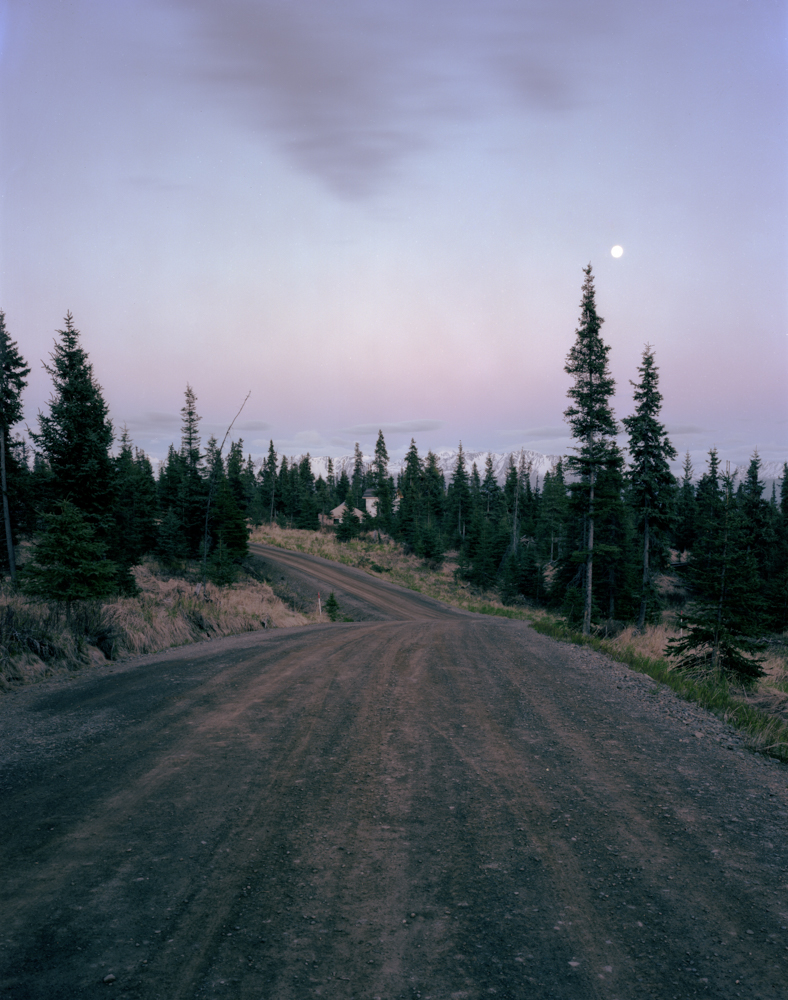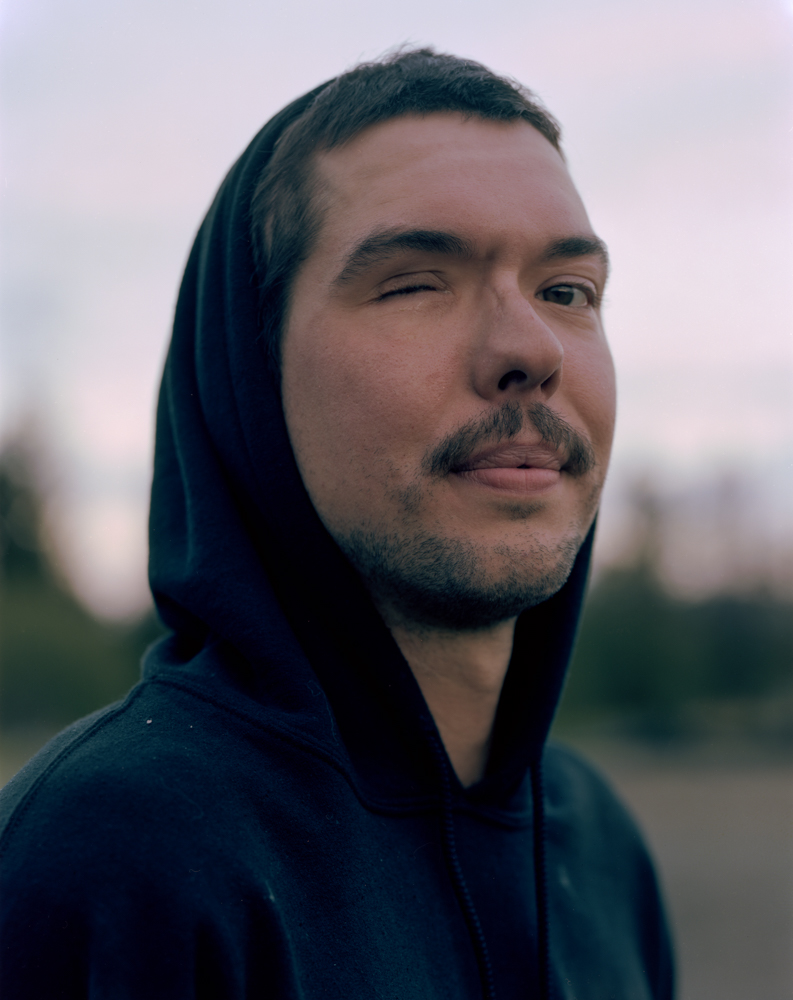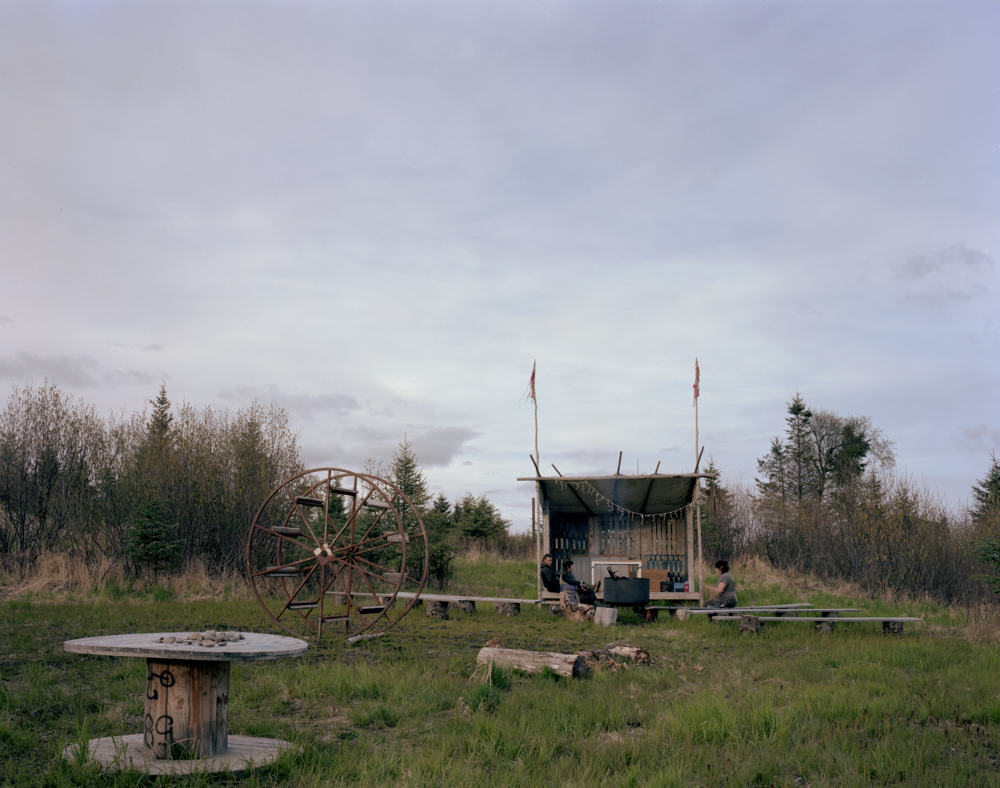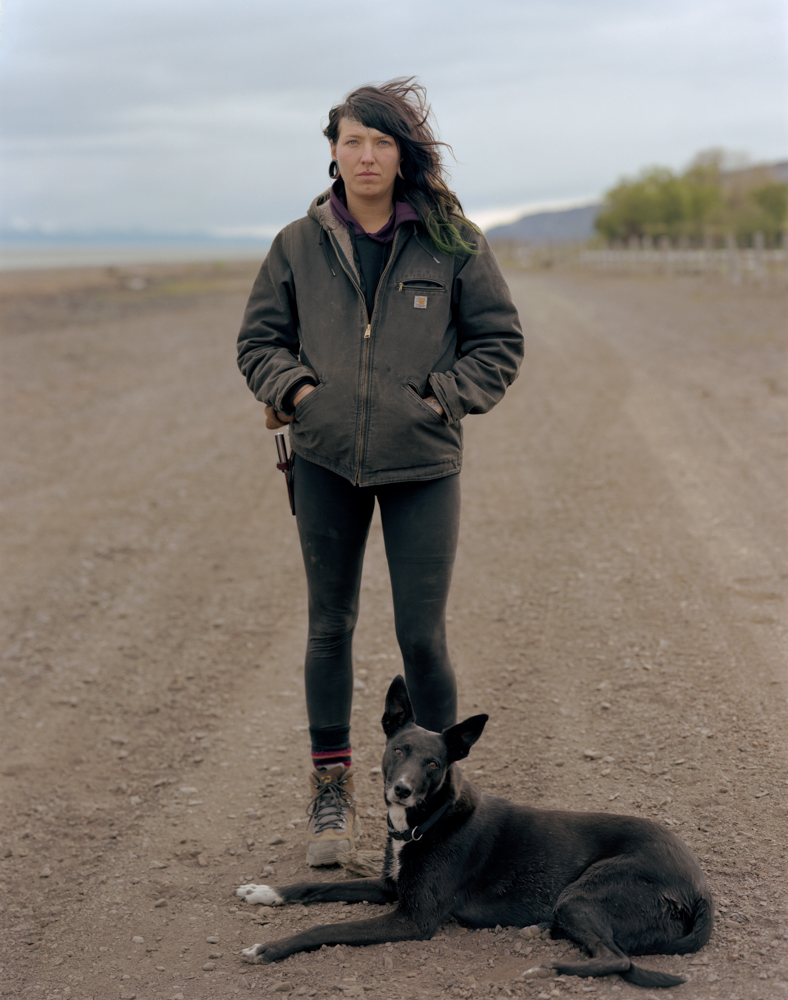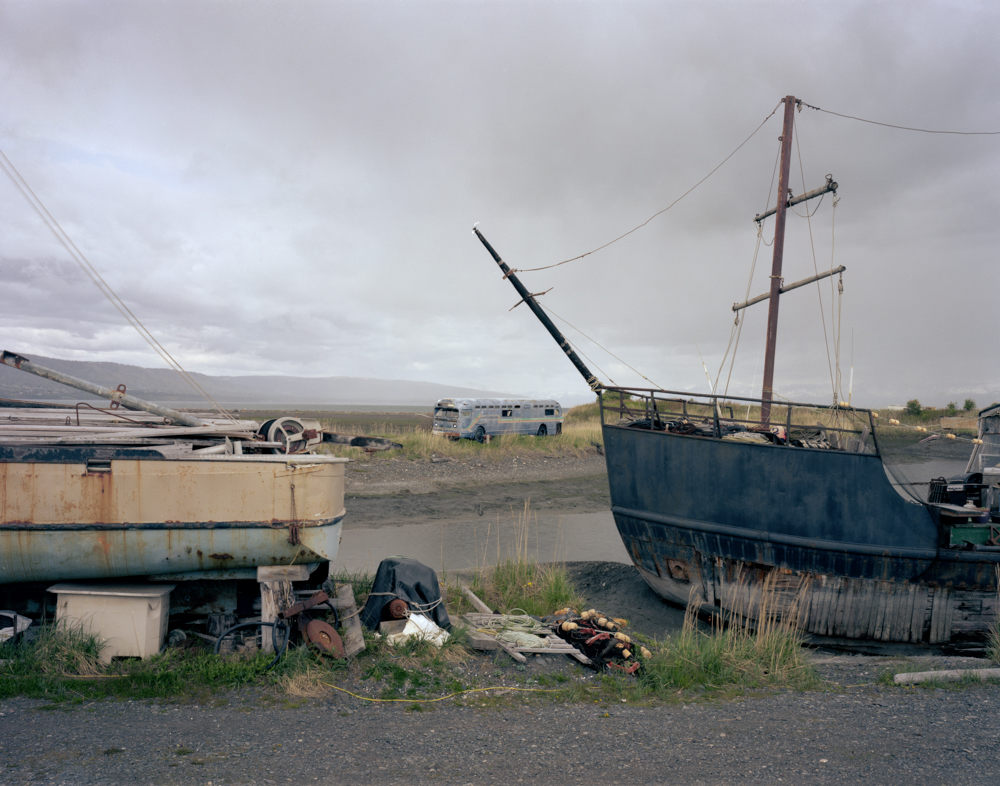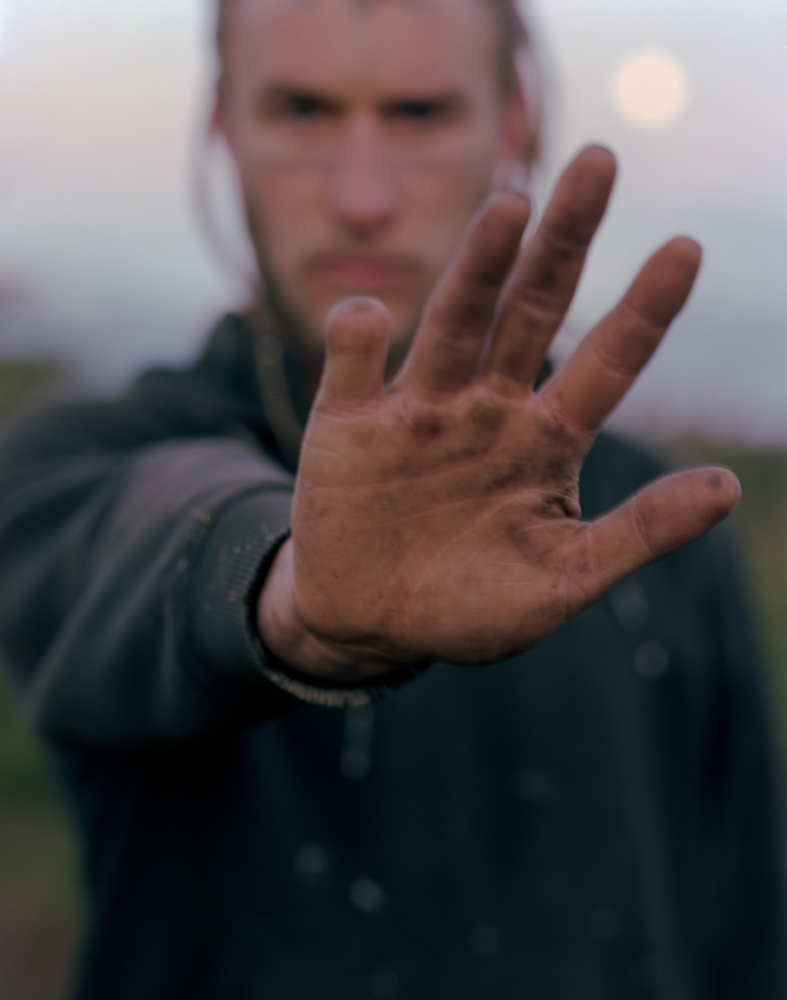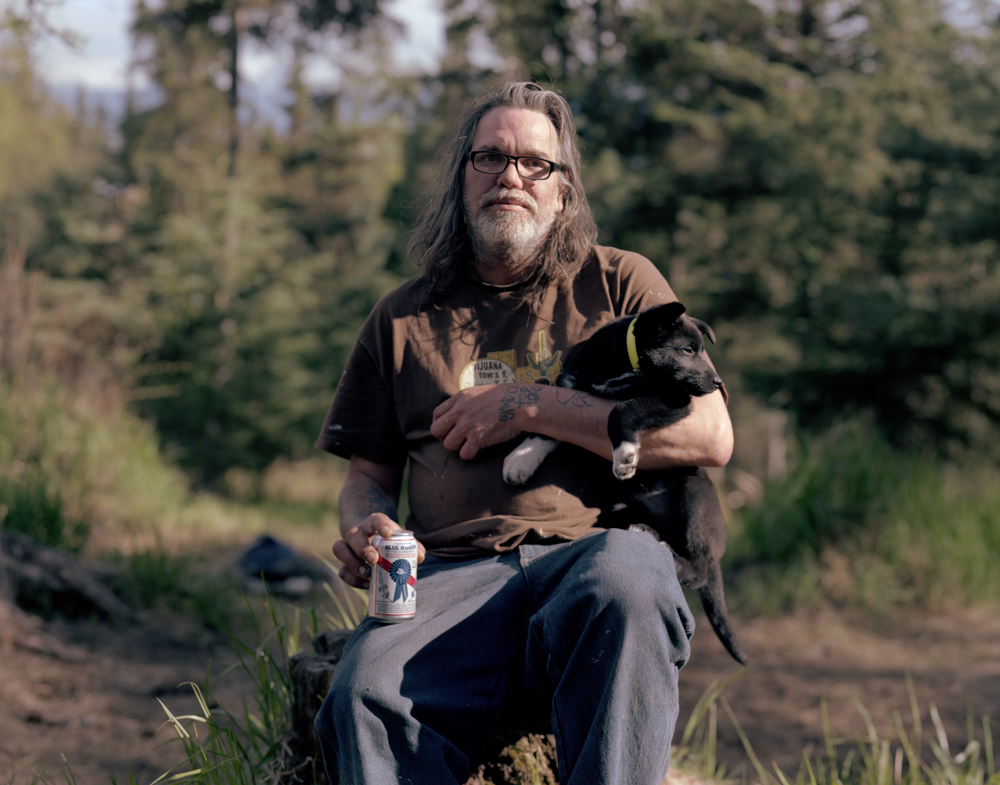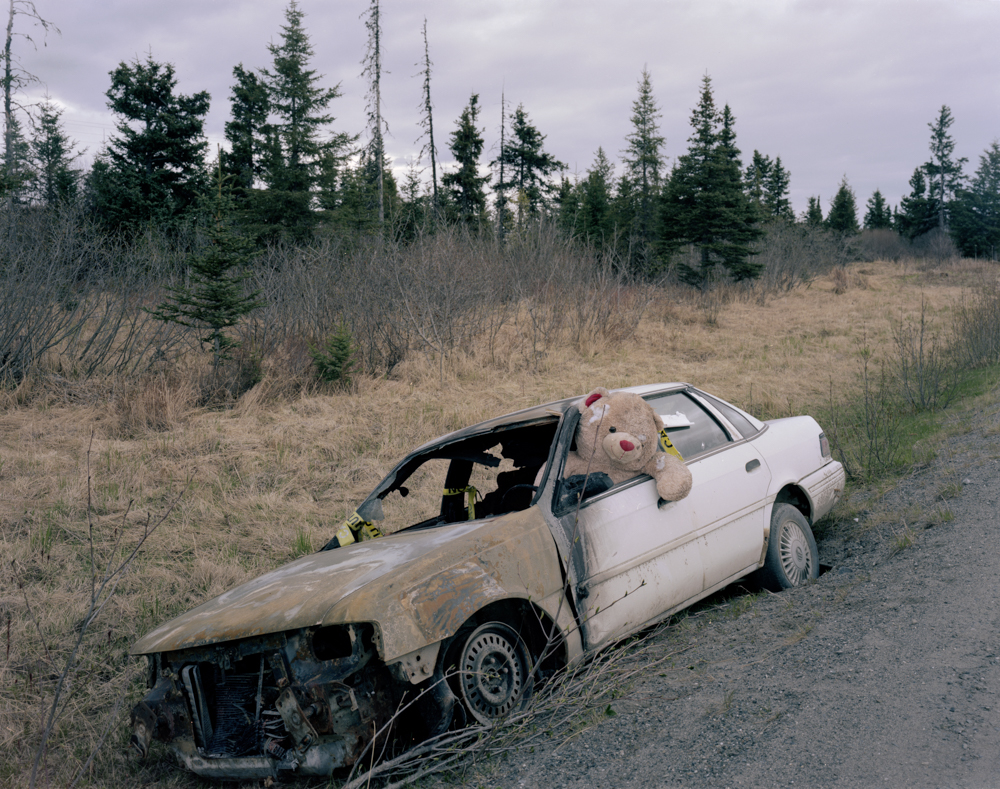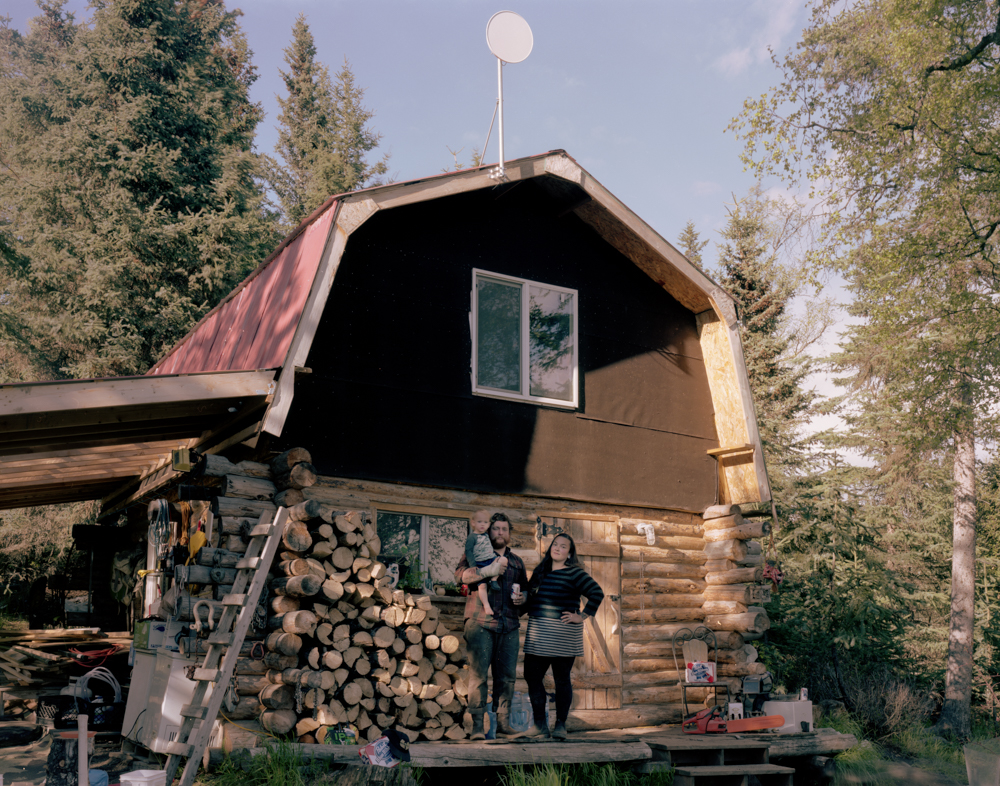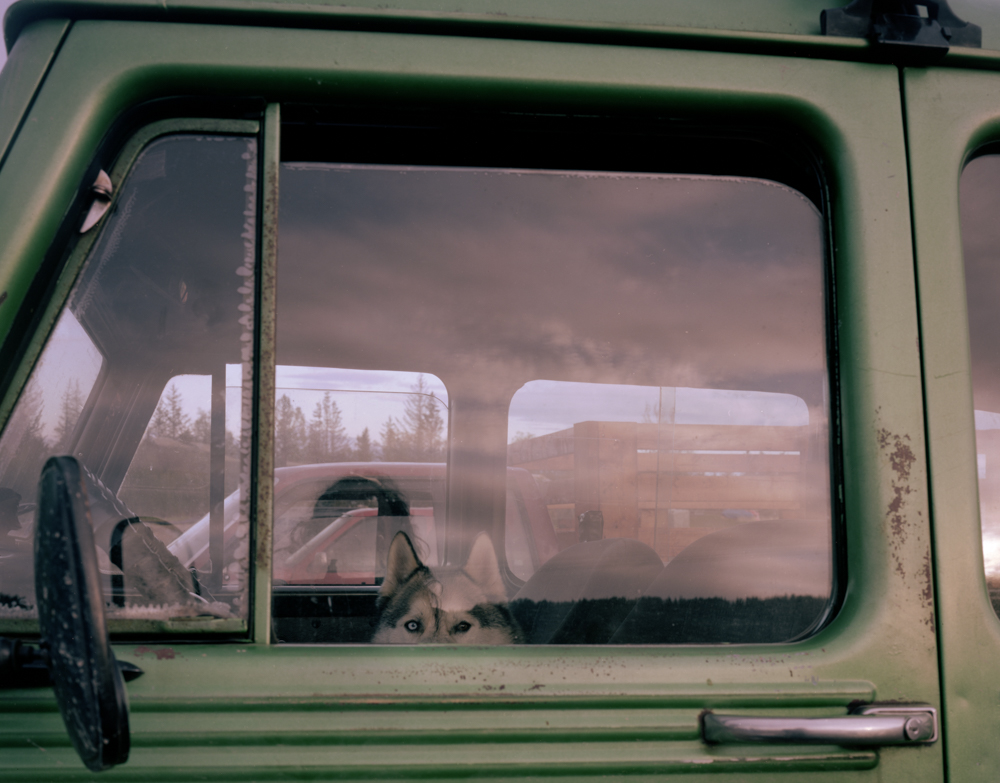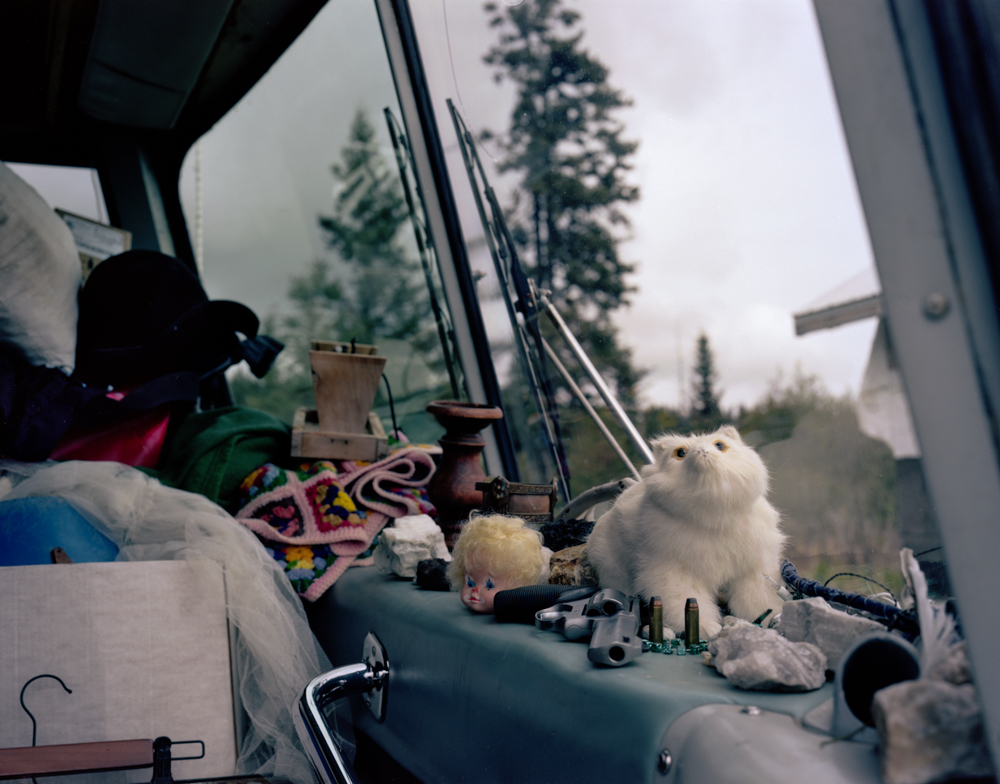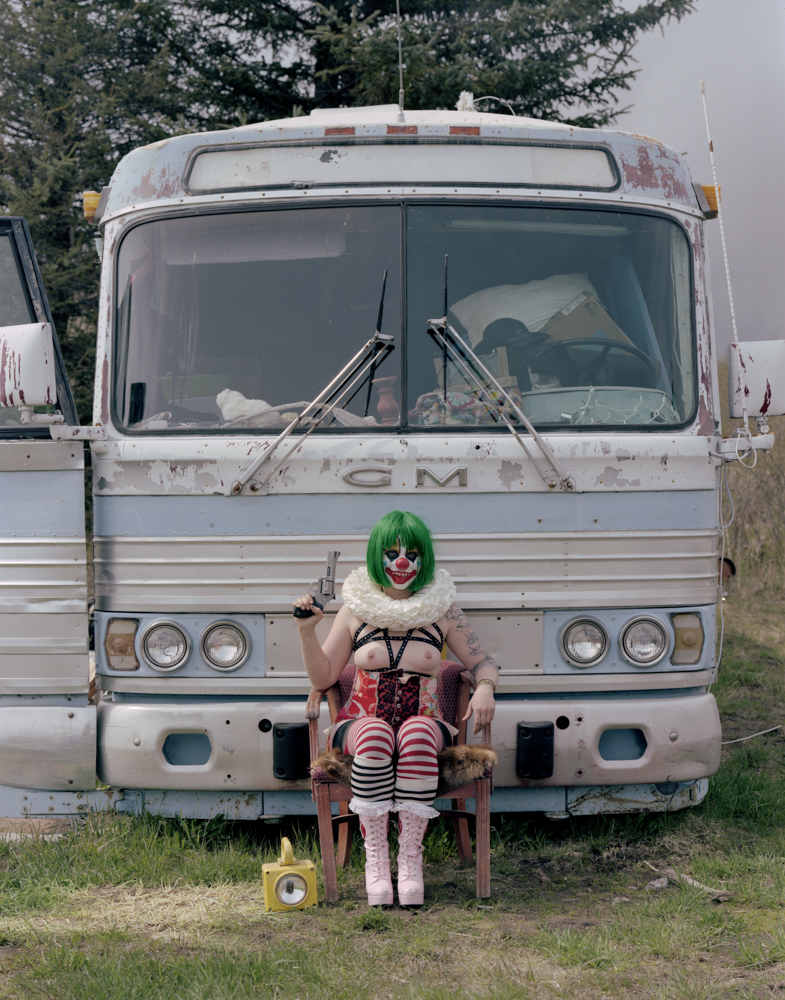Macaulay Lerman: Storytellers
The search for self-definition is a life long pursuit. For photographer and story teller Macaulay Lerman (@macaulaylermanphoto) that pursuit manifested itself early in the possibilities and potential of alternative choices–living life on the road, finding connections with those on the fringe, cultivating an understanding of the other. Macaulay’s project, Greer Road, is filled with rough beauty, places over looked and seemingly in decline with people who have chosen those same alternatives. The work has a cinematic quality and his words paint new layers onto the narrative of the photographs. Macaulay is our Storytellers Editor this week and an interview with him follows.
Macaulay Lerman was born in the Spring in Southern California and raised in New England. As a young adult he traveled throughout the US and Canada hitchhiking, hopping freight trains, and driving his camper van. While Lerman rarely carried a camera during this time, he developed a practice of documentary storytelling through extensive journaling. To this day he remains fascinated by fringe communities and alternative ways of living, perceiving, and being in the world. While his process is largely ethnographic, in the sense that he immerses himself in the worlds he depicts, he is far more interested in emotional realities than hardlined physical truths. Above all else he values dreams and memory. A photograph exists somewhere between the two and this is why he is drawn to the medium. Lerman earned his BFA in Photography and Documentary Studies from Green Mountain College in Poultney, Vermont. Since then he has shot for a variety of organizations including the Slate Valley Museum and the Vermont Folklife Center. His work has been exhibited internationally in solo and group exhibitions, and featured in publications including It’s Nice That, and Anywhere BLVD. Lerman currently resides in Burlington Vermont where he is an active member of the Wishbone Artist Collective.
Greer Road
Of all the symptoms of youth, perhaps the greatest is the inability to see beyond the world that currently is. The intoxicating illusion of permanence that defines the early years of our lives is proven false by the transient nature of young adulthood and slowly we begin to see existence for what it is; an endless process of becoming.
For as long as I can remember I have not wanted to live in this world. When I was a child this feeling manifested itself in the form of endless hours spent reading The Lord of the Rings and gallivanting off on epic quests of my own in the woods behind my family’s home. When I was a teenager the feeling remained, and yet the expression of it shifted. I discovered anarchist rhetoric, befriended local squatters, and began traveling in slowly expanding circles away from New England via hitchhiking and freight train. I tattooed my face and hands with a sewing needle and India ink, drank wine from a bag, and slept out in the woods with others who had chosen the same path.
This is how I met Nate. I picked him up along with a mutual friend at an Occupy encampment in Lancaster PA in 2011, and together we circled the country in a $500 van I had purchased from an Alpaca farmer the week before. We busked for our money, ate out of grocery store dumpsters, and for a few years at least successfully evaded time.
I imagined we’d live this way forever. That our bodies would never betray us and that the excess of society would always be enough to scrape by. However, as we entered into our early twenties an increasing plague of heroin addiction and subsequent death spread rampantly throughout our community. Our days no longer existed in a weightless suspension, change was coming.
Nate took a job on a fishing boat in coastal Alaska, and I moved to Vermont to attend a small liberal arts college. In the Summer of 2016, Nate lost his pinky in an accident while out on a 3-month fishing contract. To avoid a lawsuit he was offered a large cash settlement in addition to his pay for the 3-month voyage. With nearly $100,000 in hand, Nate bought 5 acres of land in Fritz Creek AK and began building a small homestead. Through word of mouth, this story spread throughout the nomadic punk community and soon others came to Fritz Creek with similar pursuits in mind.
If there is a common thread between travelers of this nature, it is the disbelief that you could ever truly belong in this world. That there is nowhere for you to go and so you must learn to live between things. This is simply not true. There is a place amidst the white spruce and Pacific yew where in the summer months the alpenglow suspends and it is always almost morning. There is a place past the spit up on Greer Road where the paved road ends and the fireweed takes root; thriving, becoming.
It’s fascinating reading your bio and project statement about your growing up. I can so relate to the desire to step out of the lanes our families create for us. Your coming of age and exploration of the world was considered through your journaling, but now it is evident in your photographs. Can you speak to the shift from page to the camera? What was your evolution in seeing?
Looking back it seems clear to me that the majority of my existence has revolved around the desire for communication and expression. I had a severe speech impediment as a child and to this day experience anxiety around speaking. Writing was a natural solution and beyond its documentary function the written word holds the ability to conjure memory, meaning, and essence. For these reasons I have always had a fondness for writing. The writing process relies heavily on imagination and little on physical tools making it a perfect medium while traveling. I had yearned to be involved with the visual arts since childhood but struggled with the coordination required for drawing and painting. I spent most of my early life daydreaming up surreal and unusual scenes, many of which I felt should be communicated through a visual medium but with no accessible outlet. It wasn’t until high school that two photography teachers saw potential in my images and encouraged me to pursue the medium. While I did begin carrying a camera around that time, my primary and all-consuming interest was skateboarding and the surrounding punk subculture. I made some pictures of friends suspended over stair sets and handrails. Of bloodied elbows and post session hangouts but was still largely a participant rather than observer at that time. Through punk and skateboarding I became aware of a largely nomadic subculture of “travelers” who existed for free by hitchhiking, hopping freight trains, dumpster diving for food, and squatting in abandoned spaces. At the time I had no interest in college or a career and was curious as to how I could continue to live in this world without participating in capitalism and the dominant culture. This was my way, at least for a while. After several low years and a string of bad luck I decided I needed a change. Desperate for direction and following several friends from both highschool and traveling, I got myself into a small liberal arts college in rural Vermont. In retrospect it’s hard to say how deliberate my choice to study photography in college was. Although I knew I was a creative person and had had positive experiences with the medium in the past, It was my advisor who also happened to be the photo professor’s encouragement to take his class that cemented my decision. The art program, though small, was wonderful and through looking at photo books such as Robert Adams’s Summer Nights Walking, Alec Soth’s Niagara, Jem Southam’s the Painters Pool, and Sally Mann’s Deep South, my understanding of photography expanded greatly. What attracted me to these photographers early on was the subtlety of their imagery and their capacity for sensitivity. I knew I wanted to make work that contained similar qualities.
What and who inspires you?
Light. I remember being 18 and driving a van with 2 friends and 2 strangers from Craigslist across the country for the first time and thinking that Iowa had the best evening light I’d ever seen. Connection. I remember making a portrait of a young couple in a laundromat, and after taking the picture and promising them a copy being told how this was the first time they’d seen each other since losing a child several years ago and how much the photo meant to them. Memory. The histories of my own life, the histories of others.
There is a rough beauty to your subjects and photographs. You manage to photograph unremarkable and overlooked places and yet find a cinematic melancholy in your storytelling. What draws you to place?
It all comes down to feeling. I don’t think there is anything logical about my photographic process besides the ritualistic steps of setting up the camera. Photography is a great way of subverting the conscious mind and instead relying on intuition and basic desire to guide you rather than calculations. I wander a lot in both my creative life and otherwise. It’s usually hard for me to express exactly what it is I’m looking for and yet I always know it when I see it. A friend will be driving me around and after minutes sometimes hours of silence I’ll exclaim, pull over! Sometimes my interest has to do with contradiction and humor within a landscape, sometimes it’s more abstract and encountering a specific scene unearths emotions from a previous and seemingly disparate part of my life. It’s hard to say why a concrete patch in a field of lupine begets memories of a deceased relative, or why an empty double wide trailer with the bust of a mermaid on the lawn reminds you of a childhood friend’s birthday party. I have to believe that others feel these connections as well. Essence is shared and in the end it’s all about longing.
How does living in Vermont inform your work?
Vermont has always been a place of great stability and safety for me. I’ve been here for nearly a decade now and if I had a written will it would read “please toss ashes in the Poultney river.” Regardless of the possibility of spending time in other states and countries I will always consider Vermont my home. Before Vermont I lived in Maine, Connecticut, and California. While all these places have had influence on me for better or worse, Vermont has undeniably shaped me the most in terms of the ideas and ethos I carry now into the future. The quiet temperament and slow pace of life here agrees with my psyche tremendously. It has allowed for long periods of reflection and the development of my practice photographically and as a creative human in general. While I have always struggled with truly seeing the place I live and prefer to travel to make work, I cannot imagine a better place to return to, to edit, organize, and dream up next steps.
I am particularly interested in your portraiture as the photographs feel completely authentic. You manage to capture the essence of your subjects. What is your process?
Making a portrait is a great excuse to sit quietly with another person, and with consent, to examine consciousness and be examined by consciousness. The camera in and of itself is a banal object and yet in use it is the arbiter of the ordinary and the profound, the surface and the soul. I work primarily with a 4×5 view camera and spend approximately 5-7 minutes under the dark cloth composing the shot and readying the camera. During this time the subject will usually ask something like “where do you want me to look? Is this ok?” And I’ll usually respond “that looks great thanks.” Then what follows could be described as several minutes of silence and while that’s technically true I can’t help but think something more is happening. Almost always due to the drawn out process the subject drops their guard and drifts off. Perhaps engaging imaginatively with the place they are being photographed or with another memory, or thread of memories that pass through their mind. Maybe it’s musings of the future, maybe it’s what they think they’ll cook for dinner. Regardless when this happens, and I begin to feel it happening within me too, I press the shutter release and expose the film.
I love that you speak to the endless process of becoming. I think that it’s a feeling that never goes away and is actually critical to our continued development as human beings. Do you feel further down the road at this point?
I think so. We’re conditioned to believe that much of life is linear, and yet I believe becoming to be a journey of expansion and capacity rather than starting at point A and arriving at point B. Our capitalistic culture insists that productivity and success are the landmarks of growth, and while I enjoy being productive especially within the context of photography I want my life to be about listening, learning, and empathy.
Are you considering films of your projects?
I am! I see film as a fascinating intersection of my interests. The idea of combining elements of writing, imagery, and sound to create one cohesive piece excites me greatly. Additionally, I have this impulse within my work to archive everything. Going forward I plan to begin collecting writing samples, audio recordings, and video footage from those I work with. There’s an effortless poetry to the uninterrupted world and finding ways to preserve that is as interesting to me as creating a narrative. My current project has to do with a punk community in rural Alaska and I love the idea of compiling film and audio from my trips to create an ongoing stream of documented experience from that region.
What are you working on next?
While walking in the woods I like to examine the life and circumstances of flora and fauna, and imagine the reality of their existence. A good example of this is perhaps with trees. I’ll see a tree slender and arching. It’s roots narrowly entrenched into the face of a cliff. Every second of every minute of every hour of every day that tree is being misted by the water falling below. It’s been damp for perhaps decades and decades. I try to leave my body behind and imagine what that existence has been like. The work I’m making now stems from this practice. Before the pandemic I met with new mothers, babies, couples, and spent time in natural spaces with intent of photographing them not as others or subjects but as extensions of myself and my lived experience. By telling their story I hoped to tell my own. While I am currently not photographing for this project due to the eruption of the pandemic and the outpouring of cries for racial justice and police accountability, I am listening. After all, doing so is as vital to the art making process as the act of creating. Thank you for having me.
Posts on Lenscratch may not be reproduced without the permission of the Lenscratch staff and the photographer.
Recommended
-
Interview with Maja Daniels: Gertrud, Natural Phenomena, and Alternative TimelinesNovember 16th, 2025
-
MG Vander Elst: SilencesOctober 21st, 2025
-
Photography Educator: Josh BirnbaumOctober 10th, 2025
-
Aiko Wakao Austin: What we inheritOctober 9th, 2025
-
Mara Magyarosi-Laytner: The Untended GardenOctober 8th, 2025


